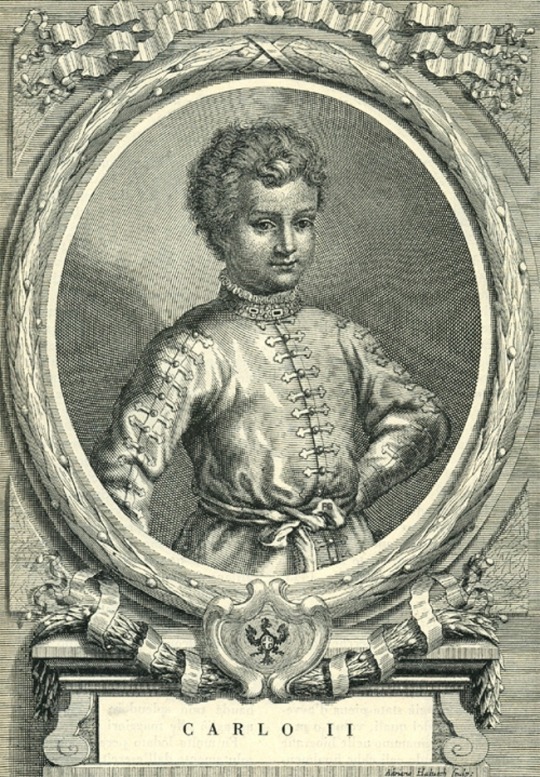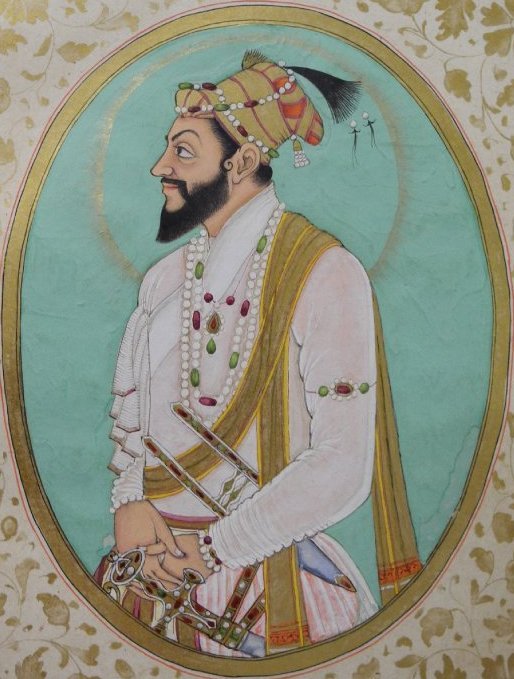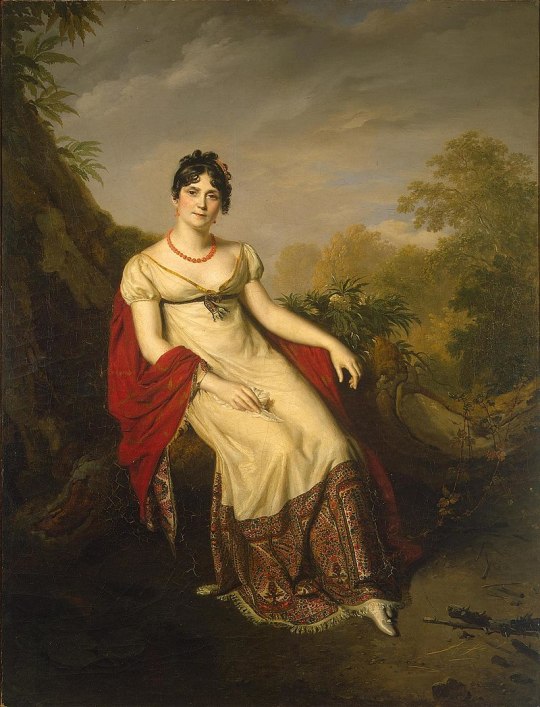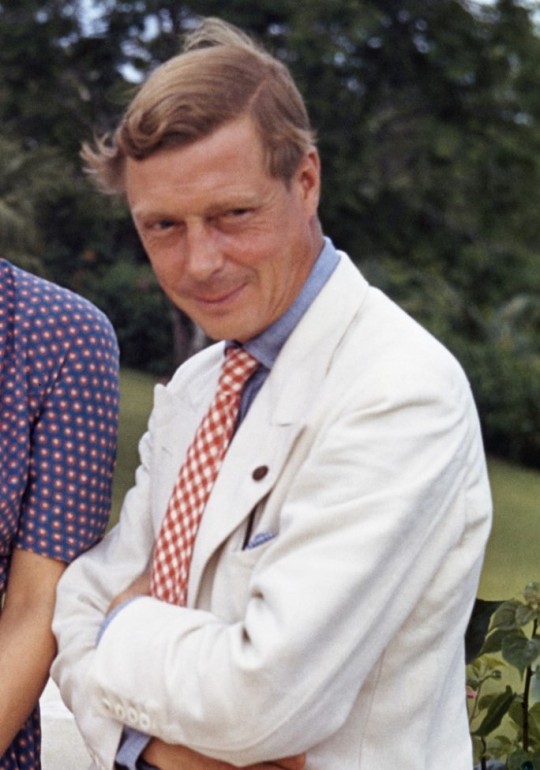#Margaret of Parma
Explore tagged Tumblr posts
Text










Royal Birthdays for today, June 23rd:
Ptolemy XV Philopator Philometor Caesar, Pharaoh of Egypt, 47 B.C.
Margaret of Denmark, Queen of Scotland, 1456
Charles II, Duke of Savoy, 1489
Shah Shuja, Mughal Prince, 1616
Marie Leszczyńska, Queen of France, 1703
Joséphine de Beauharnais, Empress of the French, 1763
Edward VIII, King of the United Kingdom, 1894
Tribhuhvan Bir Bikram Shah, King of Nepal, 1906
Maria Carolina of Bourbon-Parma, Marchioness of Sala, 1974
Maria-Carolina of Bourbon-Two Sicilies, Duchess of Palermo, 2003
#caesarion#marie leszczynska#josephine de beauharnais#margaret of denmark#Maria-Carolina of Bourbon-Two Sicilies#Maria Carolina of Bourbon-Parma#edward viii#shah shuja#charles ii#Tribhuhvan Bir Bikram Shah#royal birthdays#long live the queue
15 notes
·
View notes
Text

ab. 1562 Antonis Mor - Margaret, Duchess of Florence and Duchess of Parma and Piacenza
(Gemäldegalerie, Berlin)
351 notes
·
View notes
Text

Emperor Charles and His Mistress Johanna Van der Gheynst at the Cradle of their Daughter Margaret
Artist: Théodore-Joseph Canneel (Belgium 1817-1892)
Date: 1844
Medium: Oil paint on canvas
Collection: Museum of Fine Arts Ghent, Belgium
Description
In this genre scene, Théodore Jozef Canneel gives us a romanticized picture of the emperor’s private life. In 1522, Johanna van der Gheynst, the daughter of a tapestry-weaver in the region of Oudenaarde, gave birth to a daughter who later became Margaret of Parma. Canneel’s work is sober, with an eye for detail, but unlike Henry Leys, his historic realism is always secondary to the story. In addition to portraits, historical work and genre scenes, Canneel also focused on monumental painting.
#painting#genre art#emperor charles v#interior scene#holy roman emperor#johanna van der gheynst#man#woman#baby#craddle#cloak#basket#textiles#table#door#hat#belgian culture#belgian art#oil on canvas#artwork#oil painting#fine art#house of hasburg#austrian history#theodore joseph caneel#belgian painter#european art#19th century painting#museum of fine arts ghent
19 notes
·
View notes
Text

Bulgari Art Deco Natural Pearl, Cultured Pearl, Diamond and Imitation Gem Necklace, Circa 1930
This necklace was a wedding gift from Prince Gaetano Of Bourbon-Parma to his wife, Princess Margarete Of Thurn and Taxis and thence by descent
Source: christies.com
#christie's#bulgari#bvlgari#natural pearls#cultured pearls#diamonds#imitation gemstone#multi gem necklace#royal jewelry#prince gaetano of bourbon parma#princess margrete of thurn and taxis#pearl necklace#pearl jewelry#high jewelry#luxury jewelry#fine jewelry#fine jewellery pieces#pearl high jewelry#gemville
201 notes
·
View notes
Text
Werewolf Fact #73 - Hypertrichosis, excessive hair growth ("werewolf syndrome"), Beauty and the Beast, and Bluebeard
Today I'll be covering something else clinical: hypertrichosis.

You may have heard of "werewolf syndrome," a condition of excessive hair growth. It isn't to be confused with clinical lycanthropy, which is something else entirely. "Werewolf syndrome" is also called hypertrichosis - and it's occasionally associated with and/or can even be derived from another condition, porphyria, that was also associated with "werewolves" throughout scholarship. Likewise, the most well-known kind of hypertrichosis that involves excessive hair growth all over the body is also often associated with gum and teeth problems; such issues could lead to unusual teeth and mouth shape.
Interestingly, however, despite a lot of modern scholars retroactively assuming that werewolf victims of the past could have suffered hypertrichosis, many of the werewolf legends in question specifically describe lycanthropy sufferers to look quite different. The legends in question are later era ones from the Early Modern period, during which time lycanthropy had become a madness and a disease under clinical and scientific supervision, very much unlike previous time periods, as I cover extensively in my book The Werewolf: Past and Future as well as other werewolf facts.
These legends describe sufferers of the werewolf curse variably to only be "hairy" when in their wolf form specifically (other than, occasionally, having long hair without mention of unusual body hair), highlighting how they were not unusually hairy in human form, or to "always [have] some hairs in the hollow of his hand" (as noted by Sabine Baring-Gould in The Book of Were-Wolves; taken from page 121 of my own edition of his work). Hypertrichosis often specifically does not have hair growth on the palms, conversely. Likewise, many legends of later time periods even specifically say that werewolves are not hairy "on the outside," but that their hair "grows inward" when they aren't in their inhuman form.
Still, scholars entertain the notion of connections that I still question to a healthy degree, so I have studied it as a result. I think it's best to simply summarize it as, the syndrome reminds people of what werewolves are meant to look like, rather than asserting that "this is why some people believed in werewolves" and the like.
Hypertrichosis is rare, and any kind of proper documentation only began perhaps around the 1600s. During this time and for a very long time after, sufferers of hypertrichosis were often called a variety of terms like "ape-men" or "wolf-men." They were considered spectacles and often were brought to noble courts like exotic animals, to entertain high society. Many were circus freaks. Not all examples are before our time, either.
But, Mav, you ask, how is this related to Beauty and the Beast and Bluebeard? Aren't those fairytales?
One famous example of someone with hypertrichosis is the one whose related image began this post: Petrus Gonsalvus, who lived from around 1537 to sometime past 1617. He was called assorted names, such as "the wild gentleman of Tenerife," "the man of the woods," and of course, "the Canarian werewolf." He lived in assorted courts throughout both Italy and France, including the court of Henry II, King of France, around 1547 - he was sent there when he was but 10 years old as a gift from a regent (Margaret of Parma) of the Netherlands. He moved about various courts over time and even married.
Much of Gonsalvus's family inherited his condition (four of his seven children), including some of his daughters. Like their father, they were often traded amongst courts as pets of a sort. Here is Madelene Gonsalvus, a portrait from 1580:

It is believed that the marriage of Petrus Gonsalvus to his wife, a woman believed to be named Catherine and a lady-in-waiting to Catherine de Medici, may have provided some inspiration for the tale of Beauty and the Beast, which was first written in 1740 by Gabrielle-Suzanne Barbot de Villeneuve.
Beauty and the Beast may not be the only fairytale inspired by hypertrichosis, either. The tale of Bluebeard, as also discussed by Baring-Gould in his Book of Werewolves, describes Bluebeard as "His hair and moustache were light brown, and his beard was clipped to a point. This beard, which resembled no other beard" (232), similar to some elements of hypertrichosis variations, as well as mention of his gum condition: "At intervals he ground his teeth like a wild beast preparing to dash upon his prey, and then his lips became so contracted, as they were drawn in and glued, as it were, to his teeth, that their very colour was indiscernible" (233).
Sidebar: if you're interested in the story of Bluebeard and what it was based on, definitely check out Sabine Baring-Gould's The Book of Were-Wolves, as he has an unmatched documentation of it. I don't think it really has a place in a book about werewolves, but obviously I preserved his work in its original condition, so you can find it in my edition of his book, as well. It's not for the faint of heart, but it's morbidly very interesting.
So, connection to werewolves or not, it's still certain that hypertrichosis was seen as an inhuman condition. There are many examples of people who had or have the condition and records of how they were treated throughout history.
As mentioned, I have to wonder how much of this was actually associated with werewolf legends - given legends always explicitly involved transformation, which was the entire basis of it - but scholars eat this kind of thing up. In academia, everyone is always trying to come up with "new arguments" to "add to the conversation" or whatever, so we end up discussing and studying hypertrichosis alongside werewolf legends that specifically state such things weren't a part of the legends. Weird, isn't it?
Anyway, hope you enjoyed the post. Until next time!
And stay tuned for news and updates on a major [werewolf] book release later this year!
If you like my blog, be sure to follow me here and elsewhere for more folklore and fiction, including books, especially on werewolves! You can also sign up for my free newsletter for monthly werewolf/vampire/folklore facts, a free story, and book previews.
Free Newsletter - maverickwerewolf.com (personal site + book shop + free fiction) — Patreon — Wulfgard — Werewolf Fact Masterlist — X — Vampire Fact Masterlist — Amazon Author page
#werewolf#werewolves#werewolf fact#werewolf facts#werewolf wednesday#werewolfwednesday#folklore#folklore facts#mythology#history#wolf#wolves#lycanthrope#lycanthropes#lycanthropy#shapeshifting#shapeshifters#resources#hypertrichosis#beauty and the beast#fairytales#fairy tale
26 notes
·
View notes
Text


Philip IV, King of Spain, King of Portugal, reigned: 1621-1665
So many Velazquez portraits to choose from.
Margaret of Parma, Governor of the Netherlands, reigned: 1559-1582
Illegitimate girlboss
41 notes
·
View notes
Text
Ages of Medici Women at First Marriage
I have only included women whose birth dates and dates of marriage are known within at least 1-2 years, therefore, this is not a comprehensive list.
This list is composed of Medici women from 1386 to 1691 CE; 38 women in total.
Piccarda Bueria, wife of Giovanni di Bicci de’ Medici: age 18 when she married Giovanni in 1386 CE
Contessina de’ Bardi, wife of Cosimo de’ Medici: age 25 when she married Cosimo in 1415 CE
Lucrezia Tornabuoni, wife of Piero di Cosimo de’ Medici: age 17 when she married Piero in 1444 CE
Bianca de’ Medici, daughter of Piero di Cosimo de’ Medici: age 14 when she married Guglielmo de’ Pazzi in 1459 CE
Lucrezia de’ Medici, daughter of Piero di Cosimo de’ Medici: age 13 when she married Bernardo Rucellai in 1461 CE
Clarice Orsini, wife of Lorenzo de’ Medici: age 16 when she married Lorenzo in 1469 CE
Caterina Sforza, wife of Giovanni de' Medici il Popolano: age 10 when she married Girolamo Riario in 1473 CE
Semiramide Appiano, wife of Lorenzo di Pierfrancesco de' Medici: age 18 when she married Lorenzo in 1482 C
Lucrezia de’ Medici, daughter of Lorenzo de’ Medici: age 18 when she married Jacopo Salviati in 1488 CE
Alfonsina Orsini, wife of Piero di Lorenzo de’ Medici: age 16 when she married Piero in 1488 CE
Maddalena de’ Medici, daughter of Lorenzo de’ Medici: age 15 when she married Franceschetto Cybo in 1488 CE
Contessina de’ Medici, daughter of Lorenzo de’ Medici: age 16 when she married Piero Ridolfi in 1494 CE
Clarice de’ Medici, daughter of Piero di Lorenzo de’ Medici: age 19 when she married Filippo Strozzi the Younger in 1508 CE
Filberta of Savoy, wife of Giuliano de’ Medici: age 17 when she married Giuliano in 1515 CE
Madeleine de La Tour d’Auvergne, wife of Lorenzo II de’ Medici: age 20 when she married Lorenzo in 1518 CE
Catherine de’ Medici, daughter of Lorenzo II de’ Medici: age 14 when she married Henry II of France in 1533 CE
Margaret of Parma, wife of Alessandro de’ Medici: age 13 when she married Alessandro in 1536 CE
Eleanor of Toledo, wife of Cosimo I de’ Medici: age 17 when she married Cosimo in 1539 CE
Giulia de’ Medici, daughter of Alessandro de’ Medici: age 15 when she married Francesco Cantelmo in 1550 CE
Isabella de’ Medici, daughter of Cosimo I de’ Medici: age 16 when she married Paolo Giordano I Orsini in 1558 CE
Lucrezia de’ Medici, daughter of Cosimo I de’ Medici: age 13 when she married Alfonso II d’Este in 1558 CE
Bianca Cappello, wife of Francesco I de’ Medici: age 15 when she married Pietro Bonaventuri in 1563 CE
Joanna of Austria, wife of Francesco I de’ Medici: age 18 when she married Francesco in 1565 CE
Camilla Martelli, wife of Cosimo I de’ Medici: age 25 when she married Cosimo in 1570 CE
Eleanor de’ Medici, daughter of Francesco I de’ Medici: age 17 when she married Vincenzo I Gonzaga in 1584 CE
Virginia de’ Medici, daughter of Cosimo I de’ Medici: age 18 when she married Cesare d’Este in 1586 CE
Christina of Lorraine, wife of Ferdinando I de’ Medici: age 24 when she married Ferdinando in 1589 CE
Marie de’ Medici, daughter of Francesco I de’ Medici: age 25 when she married Henry IV of France in 1600 CE
Maria Maddalena of Austria, wife of Cosimo II de’ Medici: age 19 when she married Cosimo in 1608 CE
Caterina de’ Medici, daughter of Ferdinando I de’ Medici: age 24 when she married Ferdinando Gonzago in 1617 CE
Claudia de’ Medici, daughter of Ferdinando I de’ Medici: age 16 when she married Federico Ubaldo della Rovere in 1620 CE
Margherita de’ Medici, daughter of Cosimo II de’ Medici: age 16 when she married Odoardo Farnese in 1628 CE
Vittoria della Rovere, wife of Ferdinando II de’ Medici: age 12 when she married Ferdinando in 1634 CE
Anna de’ Medici, daughter of Cosimo II de’ Medici: age 30 when she married Ferdinand Charles of Austria in 1646 CE
Marguerite Louise d’Orleans, wife of Cosimo III de’ Medici: age 16 when she married Cosimo in 1661 CE
Violante Beatrice of Bavaria, wife of Ferdinando de’ Medici: age 16 when she married Ferdinando in 1689 CE
Anna Maria Franziska of Saxe-Lauenberg, wife of Gian Gastone de’ Medici: age 18 when she married Philipp Wilhelm of Neuberg in 1690 CE
Anna Maria Luisa de’ Medici, daughter of Cosimo III de’ Medici: age 24 when she married Johann Wilhelm, Elector Palatine in 1691 CE
The average age at first marriage among these women was 17 years old.
17 notes
·
View notes
Photo

Antonio Moro (Netherlandish, 1520-1586) Margarita de Parma, 1565 Museo del Prado Margaret of Parma was Governor of the Netherlands from 1559 to 1567 and from 1578 to 1582. She was a Duchess of Florence and a Duchess of Parma and Piacenza by her two marriages. Margaret was brought up in Mechelen, under the supervision of two powerful Spanish and Austrian Habsburg Imperial family relatives, her great-aunt, the Archduchess Margaret of Austria, and her aunt Mary of Austria, who were successive governors of the Netherlands from 1507 to 1530 and from 1530 to 1555, respectively. In 1555, the Farnese family were acknowledged as rulers of Parma by Spain in exchange for the custody of her son. That year, she left Italy for the Netherlands, where she left her son in the care of her half-brother Philip II. Philip appointed her Governor of the Netherlands when he left in 1559 for Spain. As governor, Margaret faced the rising storm of discontent against the Inquisition and Spanish despotism.
#Antonio Moro#netherlandish#dutch#art#moro#1500s#classical art#margarita de parma#spain#austria#world history#medieval#netherlands#fine art#fine arts#oil painting#farnese#female portrait#european history#europe#european#mary of austria#margaret of austria#austrian#europa#hispanic
82 notes
·
View notes
Note
If Saint Nicholas and Saint Alexandra didn't marry, who do you think would have been a great wife to him?
Hi! Sorry if I took so long to answer.
In true, I don't know. Some books speak about Helene of Orleans, Marie Louise of Bourbon-Parma and Margaret of Prussia, but I don't believe these princesses would make him happy the way Alix did.
4 notes
·
View notes
Text

Anthonis Mor - Herzogin Margarete von Parma (1522-1586)
2 notes
·
View notes
Text
Someone should truly speak bout the “later wife effect” that seems to have haunted historical figures since times long forgotten.
To break it down to you, what I call the “later wife effect” occurs when a male historical figure suddenly looses his beloved wife (most of the times, his first one) in an untimely and tragic manner -either by a childbirth gone wrong, an accident or a sudden illness-, turning the once mirthful husband into a grief-stricken widower. Perhaps because he lacks succession from said wife, because he has to provide spares to his heir, or even because an alliance is needed, he is forced to marry again; but the love never arises fully, their marriage turns into a bound of duty, and no matter what she does, or how loved she is outside their marriage: the later wife will forever be under the shadow of the first, a perfect idol, immortalised by her early death.
The “later wife effect” knows various levels:
In 1673, Leopold I, Holy Roman Emperor, lost his beloved Margaret Theresa when she was yet to turn twenty two and with child. Their seven years of union had produced four children, but only a daughter lived when Margaret Theresa died, and he went on to marry twice again; and even though he would sorrowfully remark that neither Claudia Felicitas of Austria or Eleonore Magdalene of Neuburg, his following brides, were “not like my only Margaretha”, his marriages were remarkably happy and so was he. This could be one of the mildest examples.
The middle ground would be when the marriage with the later wife is dutiful and polite, but loveless. Frederick William II of Hesse married Alexandra Nikolaevna, but soon lost her due to complications of childbirth. He would remarry nine years later to the beautiful and lively Anna of Prussia, and even though they eventually had six children, their marriage was notably cold and unhappy. Leopold I of Belgium widowed of his wife, Charlotte of Wales, soon after she gave birth to a dead son; fifteen years later, know king of Belgium, he took Louise-Marie of Orléans hand in marriage; she was shy, delicate, witty and partook in many charitable causes, earning the love of the Belgians, and the respect of her husband, with whom she had a fruitful and tranquil union; but Leopold would not be faithful to her, committing adultery with a much younger Arcadie Claret, who was said to resemble the long gone princess Charlotte. She perished a year after he had a son with Claret, and her dead did not stop the relationship between the two of them.
More unhappy cases of this effect would be those of Maximilian I, Holy Roman Emperor, and his descendant, Joseph II. When still an archduke, Maximilian married Mary of Burgundy and loved her much, a love so legendary it lived through generations in the art commissioned by their descendants. But the fairytale would come to an abrupt end when, after five years of marriage, Mary would find her untimely dead while pregnant with their fourth child, after her horse threw her off the saddle. Maximilian was most heartbroken and, after a failed marriage attempt with the young duchess Anne of Brittany, he would wed Bianca Maria Sforza. The empress from Milan was deemed “more beautiful than Mary” by Maximilian, but neither her beauty not her many charms of her would soften his callous attitude towards his wife. Having endured a miscarriage during the first months of their union, Bianca Maria, the once most sought after princess in Europe, had become a ghost in her own court, severely neglected by her husband, who refused to attend to her own funeral nor dedicate a gravestone for her. Similarly, after the traumatic passing of his wife, Isabella of Parma, Joseph II was forced to remarry to Maria Josepha of Bavaria, who he did not found as attractive as the late archduchess. He grew so disgusted of her that the same devoted husband that has been by Isabella’s bedside now commanded to put a wall between his balcony and hers, so that he could not see her, distressing old servants in the palace so much with his cold attitude that some left. When, after two years of marriage, her life was robbed by smallpox -the same ailment that had taken Isabella’s life four years before-, Joseph declared she had been worthy of respect and that he repented his coldness. However, he refused to visit her bedside and did not appear during her burial.
This should not be confused with what I call “the younger wife effect”, which takes place when a widowed historical figure, who had long remained unwed by choice, suddenly takes marriage to a beautiful and much younger person that is described to bring happiness to his once lonely and dull life. This would perfectly be exemplified with prince Maximilian of Saxony’s marriage with princess Maria Luisa Carlota of Parma, almost twenty one years since the passing of his wife (princess Carolina of Parma) or Edward I’s marriage to Marguerite of France.
15 notes
·
View notes
Text










Royal Birthdays for today, June 23rd:
Ptolemy XV Philopator Philometor Caesar, Pharaoh of Egypt, 47 B.C.
Margaret of Denmark, Queen of Scotland, 1456
Charles II, Duke of Savoy, 1489
Shah Shuja, Mughal Prince, 1616
Marie Leszczyńska, Queen of France, 1703
Joséphine de Beauharnais, Empress of the French, 1763
Edward VIII, King of the United Kingdom, 1894
Tribhuhvan Bir Bikram Shah, King of Nepal, 1906
Maria Carolina of Bourbon-Parma, Marchioness of Sala, 1974
Maria-Carolina of Bourbon-Two Sicilies, Duchess of Palermo, 2003
#caesarion#Marie Leszczyńska#josephine de beauharnais#margaret of denmark#charles ii#Shah Shuja#edward viii#Tribhuh#van Bir Bikram Shah#Maria Carolina of Bourbon-Parma#Maria-Carolina of Bourbon-Two Sicilies#royal birthdays#long live the queue
5 notes
·
View notes
Text
Events 4.5
823 – Lothair I is crowned King of Italy by Pope Paschal I. 919 – The second Fatimid invasion of Egypt begins, when the Fatimid heir-apparent, al-Qa'im bi-Amr Allah, sets out from Raqqada at the head of his army. 1242 – During the Battle on the Ice of Lake Peipus, Russian forces, led by Alexander Nevsky, rebuff an invasion attempt by the Teutonic Knights. 1536 – Charles V makes a Royal Entry into Rome, demolishing a swath of the city to re-enact a Roman triumph. 1566 – Two hundred Dutch noblemen, led by Hendrick van Brederode, force themselves into the presence of Margaret of Parma and present the Petition of Compromise, denouncing the Spanish Inquisition in the Seventeen Provinces. 1614 – In Virginia, Native American Pocahontas marries English colonist John Rolfe. 1621 – The Mayflower sets sail from Plymouth, Massachusetts on a return trip to England. 1792 – United States President George Washington exercises his authority to veto a bill, the first time this power is used in the United States. 1795 – Peace of Basel between France and Prussia is made. 1818 – In the Battle of Maipú, Chile's independence movement, led by Bernardo O'Higgins and José de San Martín, win a decisive victory over Spain, leaving 2,000 Spaniards and 1,000 Chilean patriots dead. 1862 – American Civil War: The Battle of Yorktown begins. 1879 – Bolivia declares war on Chile, and Chile declares war on Peru, starting the War of the Pacific. 1902 – A stand box collapses at Ibrox Park (now Ibrox Stadium) in Glasgow, Scotland, which led to the deaths of 25 and injuries to more than 500 supporters during an international association football match between Scotland and England. 1910 – The Transandine Railway connecting Chile and Argentina is inaugurated. 1922 – The American Birth Control League, forerunner of Planned Parenthood, is incorporated. 1932 – Dominion of Newfoundland: Ten thousand rioters seize the Colonial Building leading to the end of self-government. 1933 – U.S. President Franklin D. Roosevelt signs two executive orders: 6101 to establish the Civilian Conservation Corps, and 6102 "forbidding the Hoarding of Gold Coin, Gold Bullion, and Gold Certificates" by U.S. citizens. 1933 – Andorran Revolution: The Young Andorrans occupy the Casa de la Vall and force the government to hold democratic elections with universal male suffrage. 1936 – Tupelo–Gainesville tornado outbreak: An F5 tornado kills 233 in Tupelo, Mississippi. 1942 – World War II: Adolf Hitler issues Fuhrer Directive No. 41 summarizing Case Blue, including the German Sixth Army's planned assault on Stalingrad. 1942 – World War II: The Imperial Japanese Navy launches a carrier-based air attack on Colombo, Ceylon during the Indian Ocean raid. Port and civilian facilities are damaged and the Royal Navy cruisers HMS Cornwall and HMS Dorsetshire are sunk southwest of the island. 1943 – World War II: United States Army Air Forces bomber aircraft accidentally cause more than 900 civilian deaths, including 209 children, and 1,300 wounded among the civilian population of the Belgian town of Mortsel. Their target was the Erla factory one kilometer from the residential area hit. 1945 – Cold War: Yugoslav leader Josip Broz Tito signs an agreement with the Soviet Union to allow "temporary entry of Soviet troops into Yugoslav territory". 1946 – Soviet troops end their year-long occupation of the Danish island of Bornholm. 1946 – A Fleet Air Arm Vickers Wellington crashes into a residential area in Rabat, Malta during a training exercise, killing all 4 crew members and 16 civilians on the ground. 1949 – A fire in a hospital in Effingham, Illinois, kills 77 people and leads to nationwide fire code improvements in the United States. 1951 – Cold War: Ethel and Julius Rosenberg are sentenced to death for spying for the Soviet Union. 1956 – Cuban Revolution: Fidel Castro declares himself at war with Cuban President Fulgencio Batista. 1958 – Ripple Rock, an underwater threat to navigation in the Seymour Narrows in Canada is destroyed in one of the largest non-nuclear controlled explosions of the time. 1966 – During the Buddhist Uprising, South Vietnamese Prime Minister Nguyễn Cao Kỳ personally attempts to lead the capture of the restive city of Đà Nẵng before backing down. 1969 – Vietnam War: Massive antiwar demonstrations occur in many U.S. cities. 1971 – In Sri Lanka, Janatha Vimukthi Peramuna launches a revolt against the United Front government of Sirimavo Bandaranaike. 1976 – In China, the April Fifth Movement leads to the Tiananmen Incident. 1977 – The US Supreme Court rules that congressional legislation that diminished the size of the Sioux people's reservation thereby destroyed the tribe's jurisdictional authority over the area in Rosebud Sioux Tribe v. Kneip. 1991 – An ASA EMB 120 crashes in Brunswick, Georgia, killing all 23 aboard including Sen. John Tower and astronaut Sonny Carter. 1992 – Alberto Fujimori, president of Peru, dissolves the Peruvian congress by military force. 1992 – Peace protesters Suada Dilberovic and Olga Sučić are killed on the Vrbanja Bridge in Sarajevo, becoming the first casualties of the Bosnian War. 1998 – In Japan, the Akashi Kaikyō Bridge opens to traffic, becoming the longest bridge span in the world. 1999 – Two Libyans suspected of bringing down Pan Am Flight 103 in 1988 are handed over for eventual trial in the Netherlands. 2007 – The cruise ship MS Sea Diamond strikes a volcanic reef near Nea Kameni and sinks the next day. Two passengers were never recovered and are presumed dead. 2009 – North Korea launches its controversial Kwangmyŏngsŏng-2 rocket. The satellite passed over mainland Japan, which prompted an immediate reaction from the United Nations Security Council, as well as participating states of Six-party talks. 2010 – Twenty-nine coal miners are killed in an explosion at the Upper Big Branch Mine in West Virginia. 2018 – Agents with the U.S. Immigration and Customs Enforcement raid a slaughterhouse in Tennessee, detaining nearly 100 undocumented Hispanic workers in one of the largest workplace raids in the history of the United States. 2021 – Nguyễn Xuân Phúc took office as President of Vietnam after dismissing the title of Prime Minister.
2 notes
·
View notes
Text
10 works, PORTRAIT OF A LADY, Margaret, Duchess of Parma, with Footnotes. #137
Antonis Mor (1519–1575)Margaret, Duchess of Parma, c. 1562Oil on canvasheight: 106 cm (41.7 in); width: 76 cm (29.9 in)Staatliche Museen, Berlin The court painter Anthonis Mor probably made this portrait of Margaret, Duchess of Parma (1522-1586), around the time her half-brother, Philip II of Spain, appointed her to be governor of the Netherlands in August of 1559 Please follow link for full…

View On WordPress
#Ancient#Art#Athanasia#Biography#Fine Art#footnotes#History#John#mythology#Paintings#religion#Religious Art#Saints Cyrus#Theoctista#Theodossia#Theodota#Zaidan
0 notes
Text

~ "Princess Maria Isabella of Württemberg’s Ruby and Diamond Tiara. This tiara is made with a design featuring three bows, connected to each other by a ribbon motif, in which 7 oval and cushion-shaped rubies are set, and the whole is then entirely packaged with cushion-shaped and circular-cut diamonds. The tiara, which can also be disassembled and where the 3 arched elements can be worn as hair accessories, was made by the jewelers @a.e.koechert in 1894 on commission from Prince Johann Georg of Saxony, who gave it as a wedding gift to his new bride, Princess Maria Isabella of Württemberg. Isabella and Johann Georg, however, had no children, and upon her death in 1904, the tiara was inherited by her nephew, Prince Albert of Württemberg, second-born son of Maria Isabella's brother, Prince Albert of Württemberg, Duke of Württemberg, and his wife, Archduchess Margaret of Habsburg-Lorraine. It is likely that Albert gave the tiara to his wife, Princess Nedezhda of Bulgaria, daughter of King Ferdinand I of Bulgaria and his wife, Princess Maria Luisa of Bourbon-Parma, and that the latter, upon her death, left it to her eldest son, Prince Ferdinand Eugene of Württemberg, who however died unmarried in 2020; therefore, it is deducible that from there the tiara was inherited by his sister, Princess Marguerite of Württemberg. Marguerite, who was married to François Luce-Bailly de Chevigny, died in 2017, so it is possible that the tiara was kept by her husband until 2022, and from there passed to her son, Baron Patrick de La Lanne-Mirrlees, who may have put it up for auction in 2023 at Sotheby’s, where it was estimated at between 185.000€ and 360.000€, before finally selling for 805.000€." ~
1 note
·
View note
